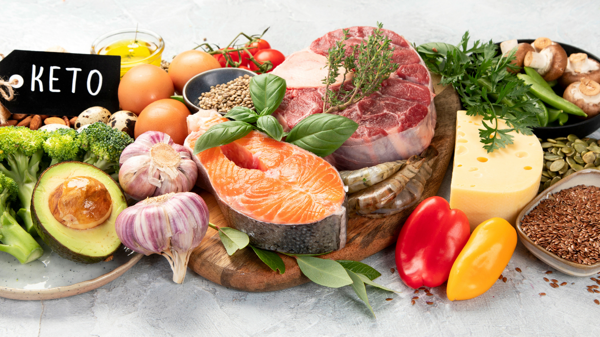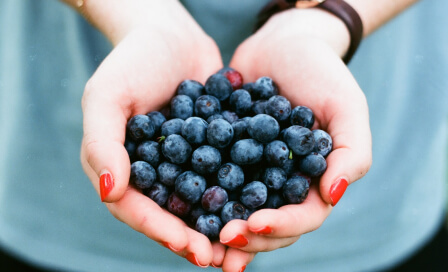Superfood Secrets: 7 Nutrient-Dense Foods Your Body Is Craving
Have you ever wondered why some foods get labeled as “superfoods” while others don’t make the cut? In recent years, the term has become increasingly popular in health and wellness circles, and for good reason. These nutrient powerhouses pack an impressive nutritional punch that can transform your health from the inside out. But with so many options and so much hype, how do you know which superfoods are truly worth adding to your shopping cart?
The truth is, many of us are eating regularly but still missing key nutrients our bodies desperately need. According to recent research, more than 90% of people don’t get enough vitamin E, vitamin D, and other important nutrients from their foods alone. This nutritional gap can leave us feeling tired, foggy, and more susceptible to illness – even when we think we’re eating “healthy.”
Today, we’re cutting through the marketing noise to reveal seven truly exceptional, nutrient-dense superfoods that your body is likely craving right now. The best part? These aren’t exotic, expensive ingredients you’ll never use – they’re accessible, delicious additions you can easily incorporate into your everyday meals.
What Makes a Food “Super”?
Before diving into our list, let’s clarify what actually qualifies a food as “super.” Contrary to popular belief, superfoods aren’t magical or mysterious – they’re simply whole foods with an exceptionally high concentration of beneficial nutrients relative to their calorie content.
Dr. Michael Greger, founder of NutritionFacts.org, explains that “true superfoods offer exceptional amounts of vitamins, minerals, phytonutrients, antioxidants, and other beneficial compounds that support overall health.” These foods typically share a few key characteristics:
-
Nutrient density: They provide substantial nutrition per calorie
-
Antioxidant properties: They help combat oxidative stress and inflammation
-
Bioavailability: Their nutrients are easily absorbed by the body
-
Whole food form: They’re minimally processed and close to their natural state
While no single food can provide all the nutrition you need, incorporating a variety of superfoods into your diet can significantly improve your overall nutritional intake and support long-term health.
Top 7 Accessible Superfoods
1. Berries: Nature’s Candy with Benefits
Berries—particularly blueberries, strawberries, and blackberries—consistently rank among the highest antioxidant foods on the planet. Their deep, rich colors signal the presence of anthocyanins, powerful compounds that fight inflammation and may help protect brain function as we age.
A 2020 study published in the Journal of Agricultural and Food Chemistry found that regular berry consumption was associated with improved cognitive performance and delayed brain aging by up to 2.5 years. That’s impressive for such a delicious treat!
How to enjoy them: Add fresh or frozen berries to morning oatmeal, blend into smoothies, or enjoy as a naturally sweet dessert topped with a dollop of Greek yogurt.
Pro tip: Buy frozen organic berries when fresh aren’t in season. They’re flash-frozen at peak ripeness, often retaining more nutrients than fresh berries that have traveled long distances.
For a convenient option, Wyman’s Fresh Frozen Wild Blueberries are exceptionally high in antioxidants compared to conventional blueberries.
2. Leafy Greens: The Foundation of Nutritional Excellence
Dark leafy greens like kale, spinach, and Swiss chard are nutritional powerhouses that deliver an impressive array of vitamins, minerals, and phytonutrients. They’re particularly rich in vitamin K, which supports bone health, and lutein and zeaxanthin, which protect eye health.
What makes greens especially “super” is their remarkable nutrient-to-calorie ratio. For example, a cup of raw kale contains just 33 calories but provides 206% of your daily vitamin A needs, 134% of vitamin C, and substantial amounts of manganese, calcium, and potassium.
How to enjoy them: Sauté with garlic as a side dish, blend into smoothies (you won’t taste them!), add to soups, or massage with olive oil and lemon for a delicious salad base.
Pro tip: If you find kale too bitter, try baby kale, which has a milder flavor, or massage regular kale with a bit of olive oil and salt to break down its fibrous structure and reduce bitterness.
3. Fermented Foods: Probiotics in Their Natural Habitat
The gut microbiome has emerged as a critical factor in overall health, influencing everything from digestion to immunity to mental health. Fermented foods like yogurt, kefir, kimchi, and sauerkraut deliver beneficial probiotics that support a healthy gut ecosystem.
According to a 2021 Stanford University study, a diet rich in fermented foods increases microbiome diversity and decreases inflammatory markers. In fact, fermented foods are ranked as the top superfood trend for 2025, with more people recognizing their powerful health benefits.
How to enjoy them: Start your day with plain Greek yogurt topped with berries, add kimchi to rice bowls, enjoy sauerkraut with protein dishes, or sip on kombucha as a refreshing alternative to sugary drinks.
Pro tip: Look for products without added sugars and with “live active cultures” on the label. For yogurt, Fage Total 2% Plain Greek Yogurt offers excellent protein content and probiotic benefits without added sugars.
4. Fatty Fish: Brain Food at Its Finest
Salmon, sardines, mackerel, and other fatty fish are exceptional sources of omega-3 fatty acids, particularly EPA and DHA, which are critical for brain health, heart function, and reducing inflammation. These essential fats can’t be produced by the body and must come from our diet.
The American Heart Association recommends eating fish (particularly fatty fish) at least twice a week for cardiovascular benefits. Research shows that regular consumption of omega-3-rich fish is associated with a reduced risk of heart disease, depression, Alzheimer’s disease, and arthritis.
How to enjoy them: Bake salmon with lemon and herbs, add sardines to salads, or try a simple fish stew with tomatoes and vegetables.
Pro tip: If you’re concerned about mercury, smaller fish like sardines and anchovies contain fewer environmental contaminants while still providing excellent omega-3 content. For those who don’t eat fish, consider a high-quality algae-based omega-3 supplement.
5. Nuts and Seeds: Tiny Nutritional Powerhouses
Despite their small size, nuts and seeds deliver impressive amounts of healthy fats, protein, fiber, vitamins, and minerals. Walnuts are particularly rich in brain-supporting omega-3s, while almonds provide vitamin E and magnesium. Chia, flax, and hemp seeds offer fiber, protein, and additional omega-3s.
A large analysis published in BMC Medicine found that people who regularly eat nuts have a 20% lower risk of heart disease and a 15% lower risk of cancer compared to those who rarely consume them.
How to enjoy them: Sprinkle seeds on salads or yogurt, spread nut butter on whole-grain toast, or enjoy a small handful of mixed nuts as a satisfying snack.
Pro tip: Store nuts and seeds in the refrigerator or freezer to prevent their healthy oils from going rancid. For a convenient option, try Navitas Organic Chia Seeds, which can be easily added to smoothies, oatmeal, or yogurt.
6. Avocados: Creamy Nutrition for Heart and Brain
Avocados stand out as one of the few fruits rich in healthy monounsaturated fats, particularly oleic acid, which supports heart health. They also provide an impressive array of nutrients including potassium, fiber, B vitamins, and vitamin E.
Research published in the Journal of the American Heart Association found that eating one avocado per week was associated with a 16% lower risk of cardiovascular disease and a 21% lower risk of coronary heart disease.
How to enjoy them: Spread on toast, dice into salads, blend into smoothies for creaminess, or mash with lime, garlic, and cilantro for a quick guacamole.
Pro tip: To speed up avocado ripening, place it in a paper bag with a banana or apple. The ethylene gas released will accelerate the process.
7. Turmeric: The Golden Anti-Inflammatory
This vibrant yellow spice has been used medicinally for thousands of years and contains curcumin, a compound with powerful anti-inflammatory and antioxidant properties. Modern research supports turmeric’s traditional uses, showing benefits for joint health, cognitive function, and even mood regulation.
A review in the Journal of Medicinal Food found that curcumin may help manage exercise-induced inflammation and muscle soreness, potentially enhancing recovery and performance.
How to enjoy it: Add to scrambled eggs, blend into smoothies, stir into soups, or make golden milk by warming plant milk with turmeric, cinnamon, and a pinch of black pepper.
Pro tip: Always pair turmeric with black pepper, which contains piperine that enhances curcumin absorption by up to 2,000%. For those wanting a more concentrated form, Garden of Life mykind Organics Maximum Strength Turmeric includes both turmeric and black pepper extract.
Common Mistakes When Adding Superfoods
While incorporating superfoods into your diet is generally beneficial, there are some common pitfalls to avoid:
1. The “More Is Better” Misconception
It’s easy to think that if a little is good, a lot must be better. However, even superfoods should be consumed in appropriate amounts. For example, turmeric supplements in high doses can interact with certain medications, and excessive consumption of Brazil nuts (which are rich in selenium) can actually lead to selenium toxicity.
Better approach: Focus on variety rather than quantity. Aim to include different superfoods throughout your week rather than large amounts of just a few.
2. Neglecting Food Synergy
Many nutrients work better together than alone. For instance, fat-soluble vitamins (A, D, E, and K) need dietary fat for proper absorption, and iron from plant foods is better absorbed when paired with vitamin C.
Better approach: Create balanced meals that combine different food groups. Pair leafy greens (iron) with lemon juice (vitamin C), or turmeric with black pepper and a source of fat.
3. Falling for Processed “Super” Products
The food industry has capitalized on the superfood trend by creating processed products that contain minimal amounts of actual superfoods but plenty of added sugars, oils, and preservatives.
Better approach: Prioritize whole, minimally processed forms of superfoods. A handful of actual blueberries is nutritionally superior to a blueberry-flavored energy bar with “superfood powder.”
4. Using Superfoods to Compensate for an Otherwise Poor Diet
No amount of kale can counteract the effects of a diet otherwise high in ultra-processed foods, excessive sugar, and unhealthy fats.
Better approach: Think of superfoods as enhancers to an already balanced diet, not as magic bullets that cancel out less healthy choices.
Bringing Superfoods Into Your Everyday Life
The true power of superfoods comes not from occasional consumption but from regular integration into your daily meals. Here are some simple ways to make that happen:
-
Start small: Begin by adding just one superfood to your regular routine, perhaps berries in your morning oatmeal or yogurt
-
Blend them in: Smoothies are an excellent vehicle for superfoods like leafy greens, berries, and seeds
-
Swap intelligently: Replace less nutritious ingredients with superfood alternatives (avocado instead of mayonnaise, for example)
-
Prep ahead: Keep washed berries, cut vegetables, and portioned nuts ready to grab when you’re busy
Remember that consistency matters more than perfection. Adding even small amounts of these nutrient-dense foods to your regular diet can have significant cumulative benefits for your health over time.
The journey to better nutrition doesn’t require a complete diet overhaul or expensive, exotic ingredients. By simply incorporating these seven accessible superfoods into your meals, you can significantly boost your nutrient intake and support your body’s natural systems.
Your body is intelligent and resilient – give it the tools it needs through these nutrient-dense foods, and it will reward you with improved energy, better mood, and long-term health. Which superfood will you add to your shopping list this week?
Note: While superfoods can significantly enhance your nutrition, they’re not replacements for medical treatment. If you have specific health concerns or conditions, always consult with a healthcare provider about dietary changes.






